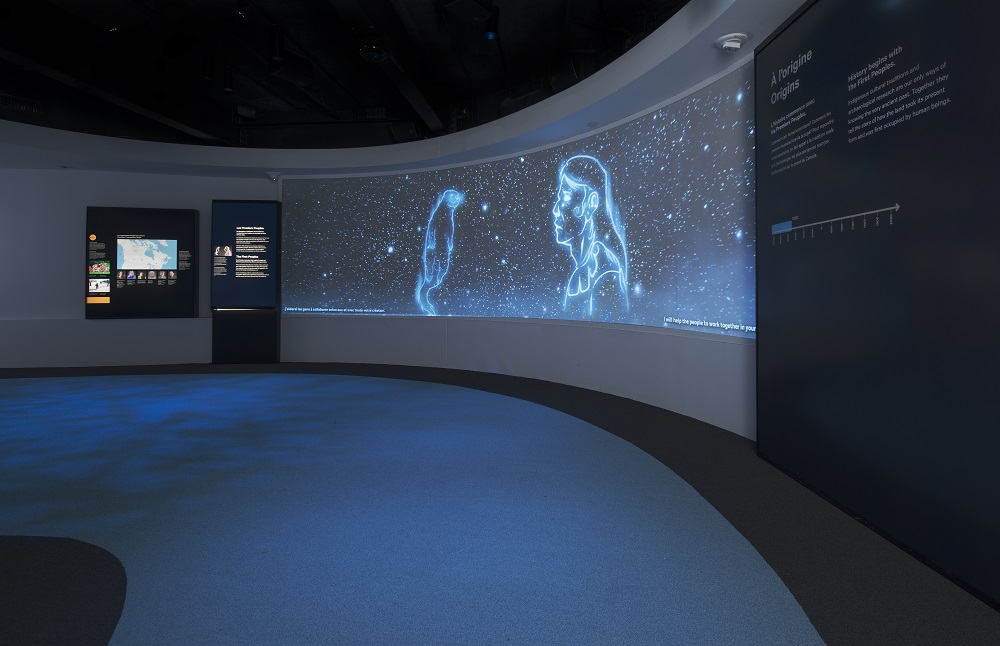Aboriginal history finds rightful place in Canadian History Hall
July 27, 2017
The Canadian Museum of History is about to set a new standard for its inclusion of Aboriginal history in Canada’s national narrative. Aboriginal experiences, from earliest times to the present day, are integral to the story told in the Museum’s new signature gallery, the Canadian History Hall, which opened July 1, 2017.
“It was lamentable,” said Dr. David Morrison, Director of Research and Content for the Canadian History Hall. He was referring to the standard approach — not so long ago — to the telling of Canada’s story. The tale would likely start with the First Peoples. “They’d be there in the beginning,” said Dr. Morrison, “because they were the only ones here. But they’d essentially disappear from the story once we got past the arrival of white people. Today, that attitude is entirely unacceptable.”
Even the old Canada Hall, replaced by this new exhibition, paid slight attention to First Peoples. It started with the arrival of the first Europeans and made little mention of the subsequent Aboriginal experience. In contrast, the Canadian History Hall begins with the earliest known human habitation, some 15,000 years ago, and weaves Indigenous history into the larger story of Canada from start to finish. The Hall includes Aboriginal achievements and contributions, and explores the often-devastating impacts of early European contact and later governmental policies.
“Some of the stories are pretty grim and deal with some awful moments,” said Chantal Amyot, Director of the Canadian History Hall project. They include the clearing of the Prairies for settlement and various attempts at forced assimilation, such as with the residential-school system. But even the darker stories, she said, highlight the persistence and survival of Aboriginal peoples and the continuity between past and present.
The exhibition was developed with input from independent advisory committees, including one composed of experts in Aboriginal history, and any story dealing with a specific Indigenous community was developed with the community’s input.
“They were involved from the very beginning,” said Lisa Leblanc, the exhibition’s Director of Creative Development and Learning. “It was an on-going conversation: ‘Here’s the story we want to tell. Here’s the wording and the artifacts we’re considering. Tell us what you think.’” She said the feedback was invaluable, often providing the Museum with new perspectives on people and events from the past.
“We’re ultimately responsible for the content of the exhibition,” said Dr. Morrison, “but we listened to their input and advice, and we took it very, very seriously.”
Dr. Morrison said the Museum has always had a special focus on Indigenous studies. He said it has the best and most nationally representative collection of Indigenous artifacts in the country, and a long history of scholarly expertise in Aboriginal topics. “We’re really well qualified to bring the Indigenous story into the mainstream. It was just something that was crying out to be done.”